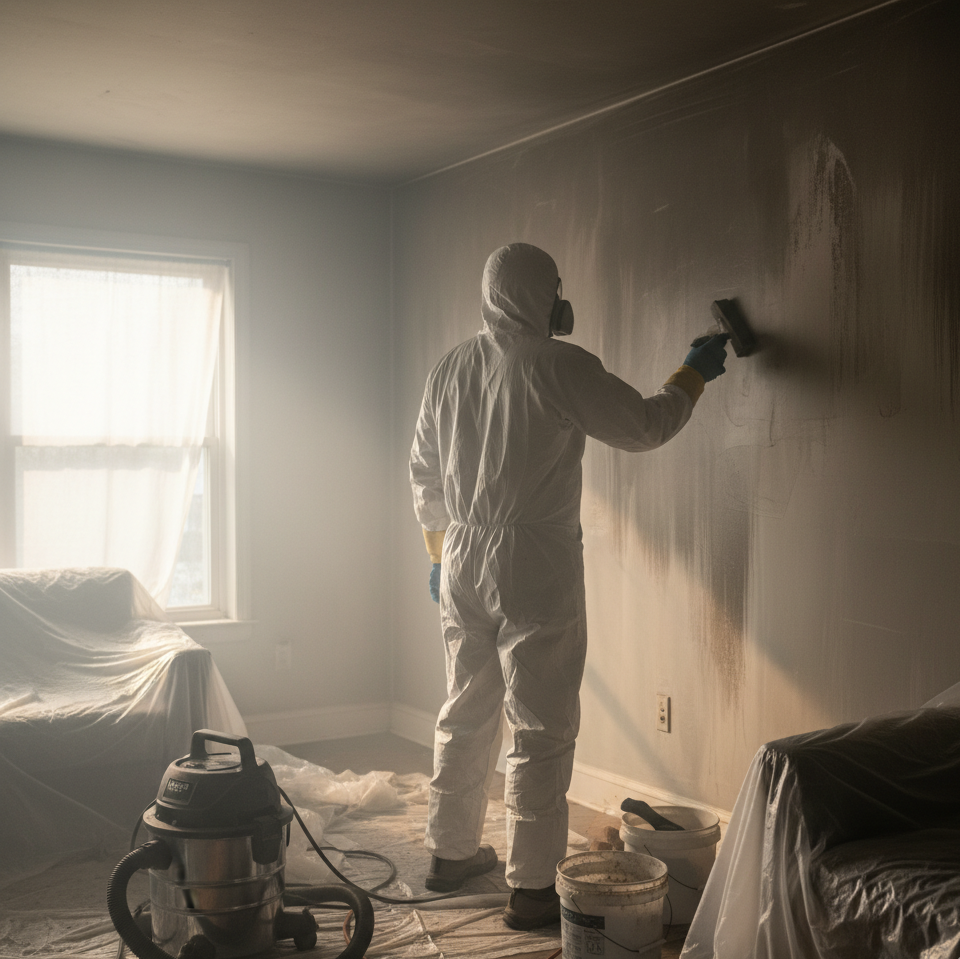Smoke damage health effects can last long after the fire is out. Most people think the danger ends once the flames are gone, but smoke can quietly linger in your home and harm your air quality. Knowing how it affects your body and how to remove it properly can protect your health and your home.
What Is Smoke Damage?
Smoke damage isn’t just soot on the walls. It’s a mix of microscopic particles and gases that spread through every inch of your home during and after a fire. These particles can cling to furniture, carpets, clothes, and even get pulled into your air vents. Once there, they continue to circulate and release toxins until everything is properly cleaned and restored.
- Wet smoke: Comes from slow, smoldering fires. It’s sticky, thick, and hard to clean.
- Dry smoke: Comes from fast-burning fires and spreads quickly through air ducts.
- Protein residue: Comes from burned food and leaves behind a strong, invisible odor.
- Fuel or oil smoke: Common in garage or furnace fires; very heavy and toxic.
Even if a fire was small, the smoke can reach areas you’d never expect- behind drywall, inside electronics, or in your HVAC system.
Can Smoke Damage Really Make You Sick?
Yes, it can. According to the U.S. Environmental Protection Agency (EPA), fine smoke particles can stay airborne for long periods and cause irritation when inhaled. They contain harmful compounds like carbon monoxide, formaldehyde, and other toxic chemicals that impact both your lungs and immune system. Common symptoms of smoke exposure include:
- Persistent coughing or shortness of breath
- Headaches or dizziness
- Burning eyes or sore throat
- Skin irritation or rashes
- Fatigue or nausea
People with asthma, COPD, or heart conditions are more sensitive to lingering smoke. Children and elderly adults are also at higher risk because their bodies react faster to poor indoor air quality.
Why Smoke Lingers After a Fire
Smoke particles are extremely small, many are smaller than a strand of hair. They can hide in fabrics, insulation, and ventilation systems where normal cleaning won’t reach. That’s why, even weeks later, you might still smell a smoky odor or notice dark film on surfaces. It’s a clear sign that residue is still present and needs to be professionally removed.
How Professionals Remove Smoke Damage
Smoke removal takes more than household cleaners or air fresheners. Restoration experts like Emergency Restoration Xperts (ERX) use specialized tools to safely remove soot, purify the air, and restore indoor air quality. A professional smoke restoration process usually includes:
- Air filtration: HEPA air scrubbers remove airborne particles.
- Surface cleaning: Professional-grade cleaners break down and remove soot.
- HVAC cleaning: Ducts and vents are deep-cleaned to stop smoke from recirculating.
- Odor removal: Ozone treatments or thermal fogging neutralize trapped smells.
- Repairs and sealing: Repainting and sealing surfaces to lock out remaining residue.
If you’d like to understand more about the science behind cleanup, see the IICRC S700 Standard for Fire and Smoke Damage Restoration, which guides how certified professionals restore smoke-affected properties.
What You Can Do Right Away
If your property recently experienced a fire, quick action matters. Here’s what to do immediately:
- Avoid entering affected rooms if you smell smoke or feel irritation.
- Open windows for ventilation, but avoid turning on fans.
- Replace HVAC filters to reduce recirculation.
- Contact your insurance provider to report a claim.
- Call Emergency Restoration Xperts (ERX) at (828) 639-8208 to begin smoke cleanup and air purification right away.
Final Thought
Smoke damage isn’t just about looks or odor, it’s a serious health issue that requires professional attention. The faster you act, the safer your home will be. ERX is available 24/7 to inspect, clean, and restore your property with care and certified expertise.
Call Emergency Restoration Xperts (ERX) anytime at (828) 639-8208 for complete smoke and odor removal services.


